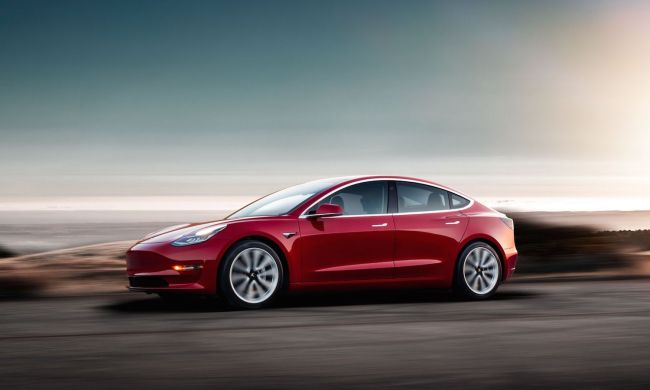
Add GPS

We’ve tested numerous GPS systems and picked the Garmin DriveAssist 50LMT as the one to buy. It provides real-time traffic information, turn-by-turn directions, and it even comes with a built-in dash cam. Better yet, the camera on the back of the device warns you if a collision with another car is imminent. It’s surprisingly affordable for such a feature-packed device.
Add infotainment

It’s getting increasingly difficult to find a brand-new car not equipped with a touch screen-based infotainment system. Putting a touch screen in an older model is harder than adding, say, a GPS but it’s not impossible, either. If your dashboard has a large enough slot, you can purchase an aftermarket head unit that will instantly give your ride all the features commonly found in new cars.
We recommend Sony’s XAV-AX100, which is built around a high-resolution 6.4-inch screen. It figures on the growing list of aftermarket head units compatible with both Android Auto and Apple CarPlay. It’s also compatible with most aftermarket rear-view cameras so you won’t need a separate screen to see what’s behind you. Bluetooth connectivity, voice commands, and a 10-band equalizer sweeten the deal.
Add a rear-view camera

Starting in May of 2018, every new car will need to come standard with a rear-view camera. Once a luxury in the world’s most expensive models, the rear-view camera has become a safety feature that helps save lives by showing motorists what’s behind them before they hit the gas pedal. If your car was built after 1996, and if you have the budget, we recommend getting the RearVision. While it’s not cheap, it’s the best aftermarket rear-view camera on the market.
If your car is older than 1996, or if you don’t want to spend that much money, you can select a basic unit like the Auto-Vox M1. It displays footage on a screen you can either attach to your dashboard using an adhesive strip or secure to your windshield with a suction cup. The RearVision is wireless, but the M1 will require you to spend a few minutes wiring everything up.
Add a dash cam

Garmin’s Dash Cam 55 is the best unit on the market. It boasts a ton of features, it’s well built, and it comes with a reasonable price tag. It shoots 30 frames per second at 1440p HD resolution so images are crystal clear by day. It even has a cool built-in time-lapse feature that lets you make videos and share them using a purpose-designed app.
Add a head-up display

The head-up display (HUD) exists at the junction of safety features and tech features. It’s a device that aims to reduce distracted driving by placing key information about the car and its surroundings right in the driver’s line of sight. The HUD was first used on military fighter jets but it’s becoming increasingly common in premium and luxury cars.
Garmin makes the best all-around aftermarket HUD by adhering to the motto “simpler is always better.” It provides step-by-step navigation directions, the posted speed limit, and it even reveals the location of speed cameras. It needs to be paired with Garmin’s very own smartphone application, meaning it’s not compatible with Google Maps. Sorry, Android fans. The good news is it’s relatively compact so you can easily move it around from car to car.



